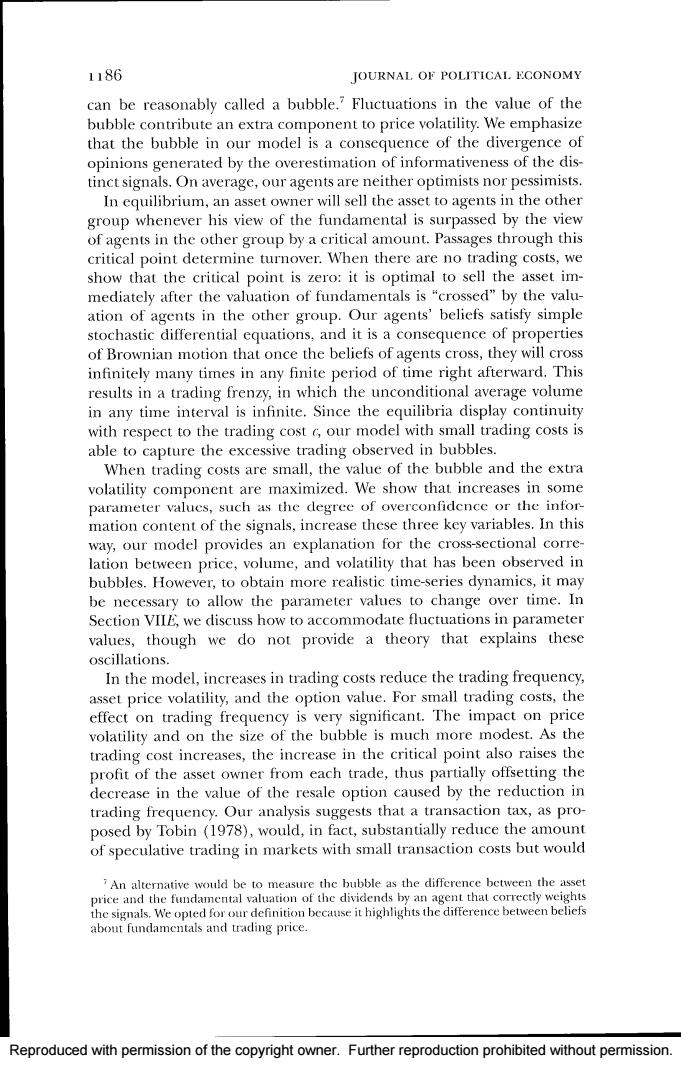正在加载图片...

1186 JOURNAL OF POLITICAL.ECONOMY can be reasonably called a bubble.?Fluctuations in the value of the bubble contribute an extra component to price volatility.We emphasize that the bubble in our model is a consequence of the divergence of opinions generated by the overestimation of informativeness of the dis- tinct signals.On average,our agents are neither optimists nor pessimists. In equilibrium,an asset owner will sell the asset to agents in the other group whenever his view of the fundamental is surpassed by the view of agents in the other group by a critical amount.Passages through this critical point determine turnover.When there are no trading costs,we show that the critical point is zero:it is optimal to sell the asset im- mediately after the valuation of fundamentals is "crossed"by the valu- ation of agents in the other group.Our agents'beliefs satisfy simple stochastic differential equations,and it is a consequence of properties of Brownian motion that once the beliefs of agents cross,they will cross infinitely many times in any finite period of time right afterward.This results in a trading frenzy,in which the unconditional average volume in any time interval is infinite.Since the equilibria display continuity with respect to the trading cost 6 our model with small trading costs is able to capture the excessive trading observed in bubbles. When trading costs are small,the value of the bubble and the extra volatility component are maximized.We show that increases in some parameter valucs,such as the degree of overconfidence or the infor- mation content of the signals,increase these three key variables.In this way,our model provides an explanation for the cross-sectional corre- lation between price,volume,and volatility that has been observed in bubbles.However,to obtain more realistic time-series dynamics,it may be necessary to allow the parameter values to change over time.In Section VIIE,we discuss how to accommodate fluctuations in parameter values,though we do not provide a theory that explains these oscillations. In the model,increases in trading costs reduce the trading frequency, asset price volatility,and the option value.For small trading costs,the effect on trading frequency is very significant.The impact on price volatility and on the size of the bubble is much more modest.As the trading cost increases,the increase in the critical point also raises the profit of the asset owner from each trade,thus partially offsetting the decrease in the value of the resale option caused by the reduction in trading frequency.Our analysis suggests that a transaction tax,as pro- posed by Tobin (1978),would,in fact,substantially reduce the amount of speculative trading in markets with small transaction costs but would 7 An alternative would be to measure the bubble as the difference between the asset price and the fundamental valuation of the dividends by an agent that correctly weights the signals.We opted for our definition because it highlights the difference between beliefs about fundamentals and trading price. Reproduced with permission of the copyright owner.Further reproduction prohibited without permission.Reproduced with permission of the copyright owner. Further reproduction prohibited without permission